
Project
| Ajanta-Ellora Conservation and Tourism Development Project Phase-II |
|
Ajanta and Ellora Caves are World Heritage sites in India, located on the Deccan plateau in the Maharashtra state, whose capital is Mumbai as a gateway. Although international and Indian tourists enjoy both heritage sites, visitor facilities with related services and access were undeveloped or in poor condition. The Indian Government launched a regional development program, including conservation and tourism development programs for the two World Heritage sites. The government of Japan supported the funding of the projects at the request of the Indian Government for a long-term loan scheme (Phase I and II) to promote integrated regional development.
The Phase I project consisted of 1) conservation of the heritage sites, 2) natural environment rehabilitation (reforestation) for the surroundings, 2) Aurangabad Airport improvement as the gateway for the sites, 3) regional access roads improvement, and 4) infrastructure (electricity and water, sewerage) improvement. The Phase II project has covered consecutive projects: 5) adding to conservation of heritages sites, 6) tourism promotion component, 7) visitor center construction for both sites, 8) micro-credit programs for development of local products and 9) site improvement for other historical sites.
We provided key areas of expertise and consulting services through project management (project leader), business plan supervision and exhibition, tourism promotion, and preservation advice for historical monuments.
|
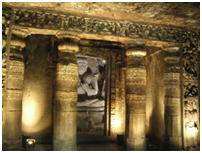 |
 |
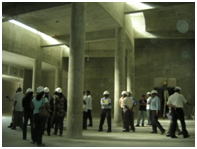 |
| Introduction of no harm lighting system on the mural paintings in the Ajanta Caves |
An exterior view of Ajanta Visitor Center) |
An interior view of Ellora Visitor Center |
| Study on Tsunami recovery, rehabilitation and development of Islands in the Maldives |
|
The Republic of Maldives is an island nation which consists of 1,192 coral islands in the Indian Ocean. Tourism industry is one of the key economic activities in the country, serving international tourists from all over the world. However the country is apprehensive of global climate warming and the consequent rise in sea levels ̶ almost of all islands are barely above the current sea levels (2m).
.
After the tsunami generated by the Sumatra earthquake caused significant damage, the government of Japan implemented emergency assistance by dispatching medical teams, and decided on providing further assistance for the rehabilitation and reconstruction of the devastated areas, at the request of the Maldives Government. This project aimed to implement assistance with development studies for reconstruction of public facilities such as evacuation center, tsunami mitigation embankments, and other relevant evacuation facilities.
We were engaged in service design and construction supervision of these facilities, while a development framework for reconstruction planning was also investigated.
|
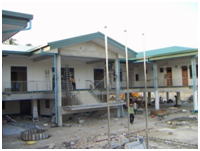 |
 |
| Reconstruction of collapsed local island administration office introducing
stilted building structure |
Atoll administration complex building newly reconstructed after collapse
in the tsunami |
| Urban Rehabilitation Support Program in Mazar-e-Sharif (URSP-MZR) in Afghanistan |
|
After long conflict in Afghanistan, the interim administration promoted the process of peace and reconstruction. The government of Japan has assisted the government of Afghanistan with concerted actions with international donors, focusing on key areas for emergency humanitarian assistance such as education, health, refugee repatriation, resettlement, demining, and social participation of women in Kabul and Kandahar.
In the city of Mazar-e-Sharif, the capital of Balkh province and one of the urban centers in the northern part of the country, heavy damages to urban facilities was observed due to aging, deterioration without proper maintenance during the long-term conflict, and delayed post-conflict reconstruction. The government of Japan, in response to a request of the Afghanistan Government, implemented the rehabilitation project URSP-MZR for the city of Mazar-e-Sharif.
The project consisted of 1) rehabilitation projects for urban roads and schools, and 2) project management services including design and construction supervision of facilities in the city. Our services centered on providing construction management, including planning design and supervision for high school buildings.
|
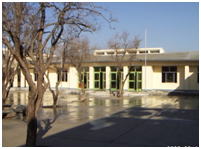 |
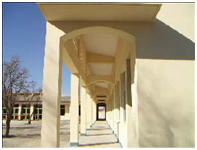 |
 |
| Overview of high school reconstructed |
Exterior view of connecting corridor |
Interior view of a classroom |
 Facilities Design and Project Management Facilities Design and Project Management
|